Apricot vs Red Poodles – Are They Different?
Poodles have been considered a fashionable dog ever since their popularity skyrocketed in France in the 17th century. Still popular today, Poodles have gone from three basic coat colors–black, white, or “parti” (black and white)–to ten different colors recognized by the AKC. Colors officially recognized now include black, white, blue, cream, gray, silver, red, apricot, silver beige, and all shades of brown, including caf-au-lait.
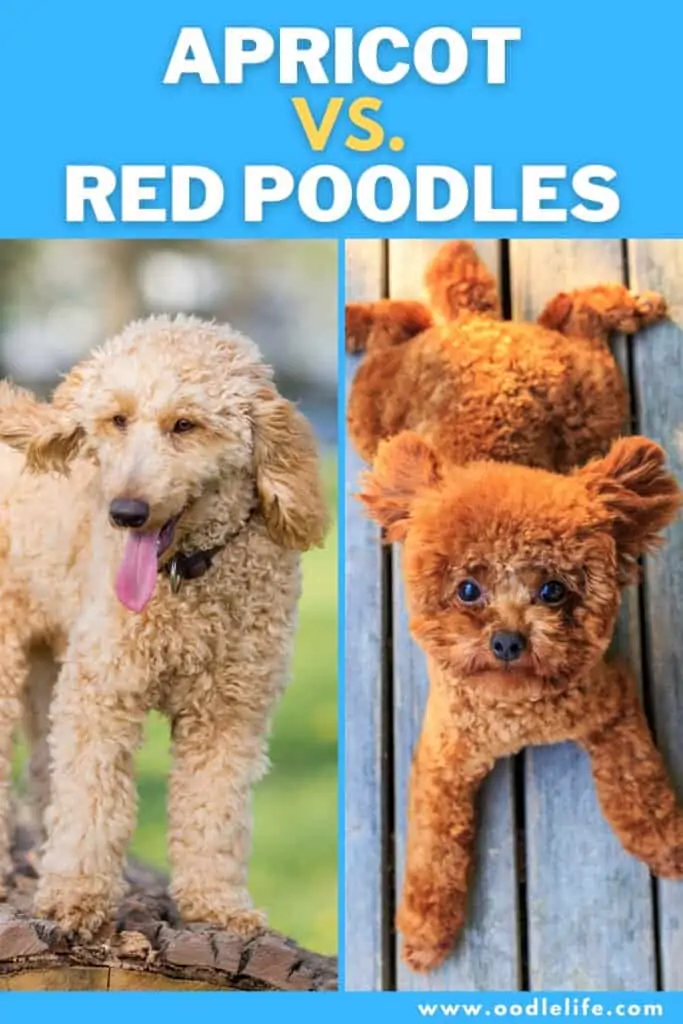
Red vs. Apricot Poodles
Red and Apricot Poodles are two of the rarest and most sought-after colors of Poodles. Because both red and apricot coloring can vary in hue, the two colors can be difficult to discern at times. Both colors are prone to fading or “clearing,” making an Apricot and a Red Poodle look even more similar.
Red and Apricot are the two newest Poodle colors. While some say that the red color was derived from apricot and is, therefore, a variation of the same color, breeders maintain that Red Poodles contain a separate gene known as the “Rufus” gene.
Perhaps you’re interested in getting a Poodle and are drawn to these rare colors but are unsure of the difference. Because Poodles come in so many different colors, many of which are known to fade over time, it can be hard to know what to expect after you find a puppy. Some breeders even put down one color on a puppy’s AKC certificate only to have the full-grown dog take on a completely different appearance.
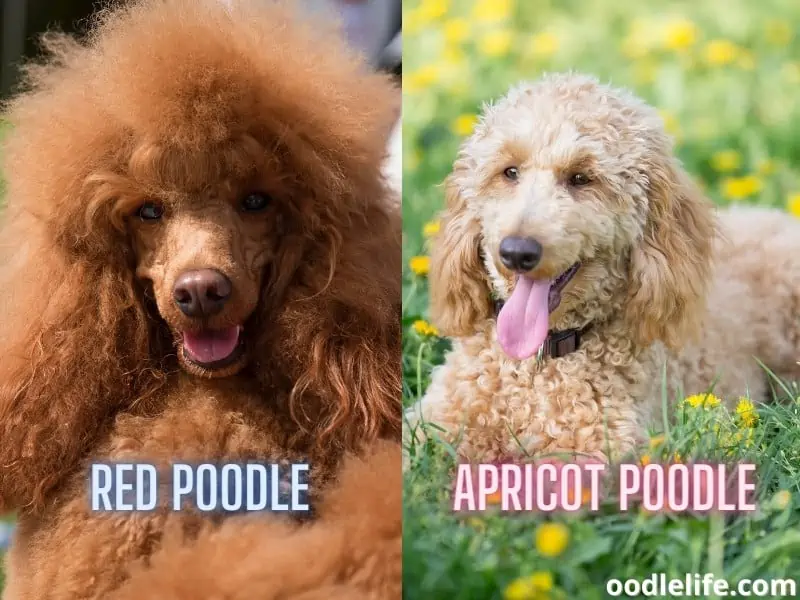
Apricot Poodles
Apricot Poodles have coats that are a warm “apricot” hue somewhere between red and cream. The apricot color is caused by a recessive gene, making Apricot Poodles very rare. The apricot color should ideally be accompanied by black “points”–the nose, eye rims, lips, and toenails.
Apricot Poodles’ coats fade when exposed to UV light, so your Apricot Poodle puppy may end up looking more cream by the time it is two or three years old.
The first Apricot Standard Poodle, Sowden Yellow Gall, was born in 1898. Most Poodles were black, white, or particolored until this point. The apricot color quickly grew in popularity and was bred mainly in the UK. In 1912 the first Apricot Miniature Poodle was born, and Apricot Poodles are now available in all sizes of Poodles.
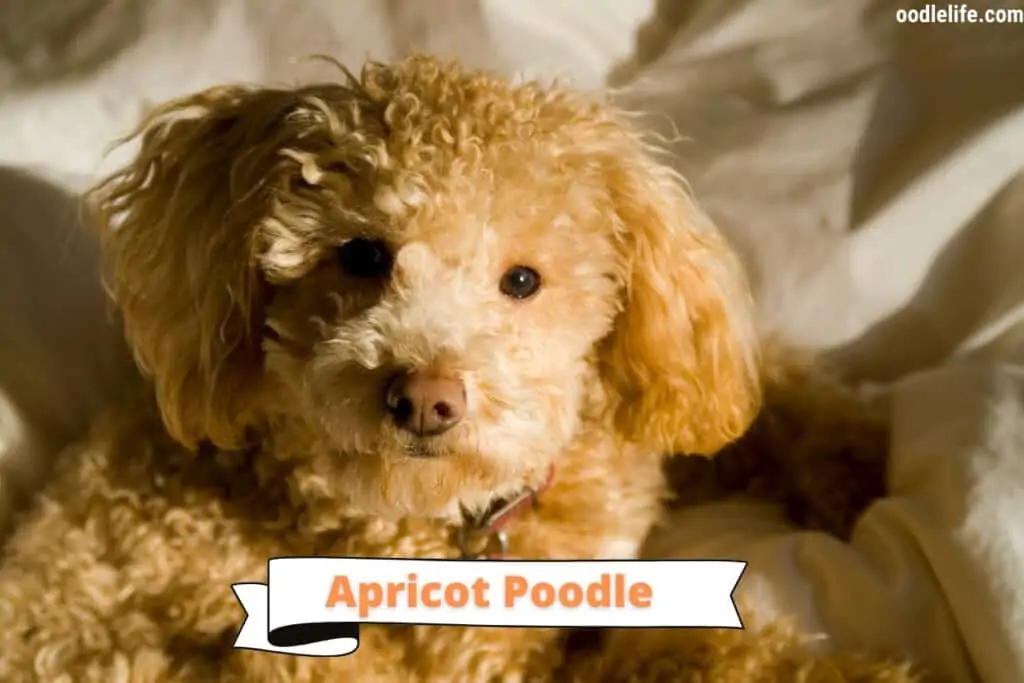
Red Poodles
Red Poodles vary from dark red or “mahogany” to light red. Because it is so rare, the darker Red Poodles are very desirable. However, red coats are prone to fading, and most Red Poodles will end up with a coat that resembles the apricot color by the time they are about three years old.
It is also possible that a red Poodle’s coat can darken over time instead of fade.
Red Poodles first came about by experimental breeding of a Standard Poodle with an Apricot Miniature Poodle. Because of this history, the first Red Standard Poodles tended to be smaller than other colors of Poodles. However, the largest resulting Red Poodles were bred, and Red Poodles are now very similar in size to Poodles of different colors.
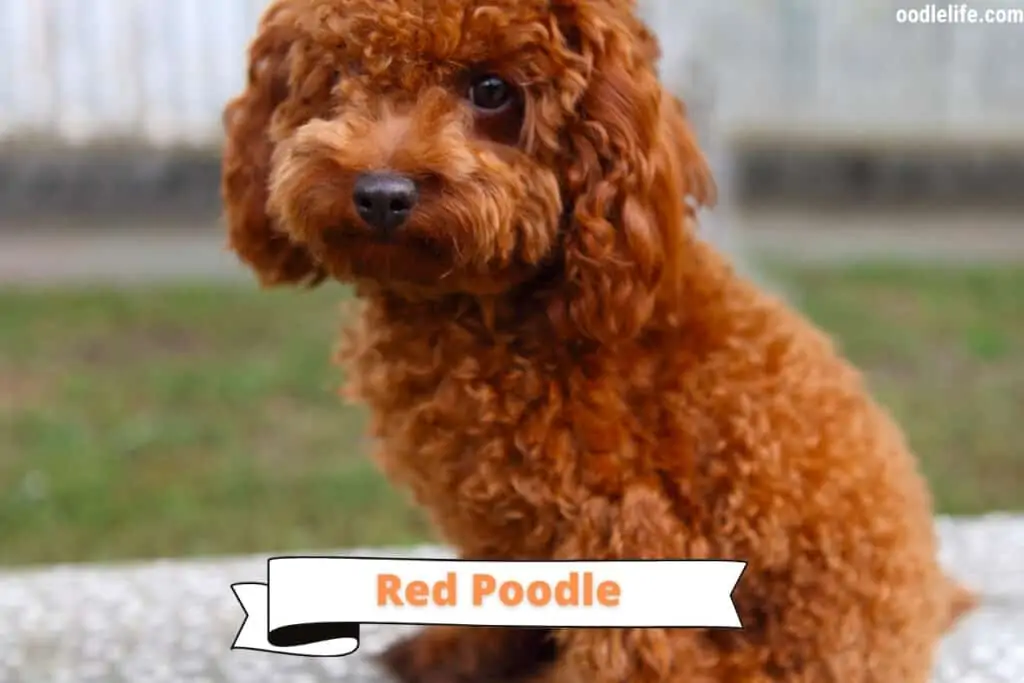
So Are Red Poodles and Apricot Poodles the Same or Different?
Some say that it must be the same gene because the Red Poodle originated from Apricot Poodles. Ongoing research on the DNA of these different varieties of Poodles suggests that the DNA of Red Poodles contains an entirely different gene, known as the “Rufus” gene, which may play a part in darkening an apricot coat.
Despite their genes being different, the appearances of Red Poodles and Apricot Poodles can end up being very similar. Because both Apricot Poodles and Red Poodles are prone to fading or “clearing,” the color of a puppy is not always indicative of what that dog will look like as an adult. Even the darkest red and “mahogany” Poodles will most likely have lighter coats by the time they reach two or three years of age, making them more apricot in appearance.
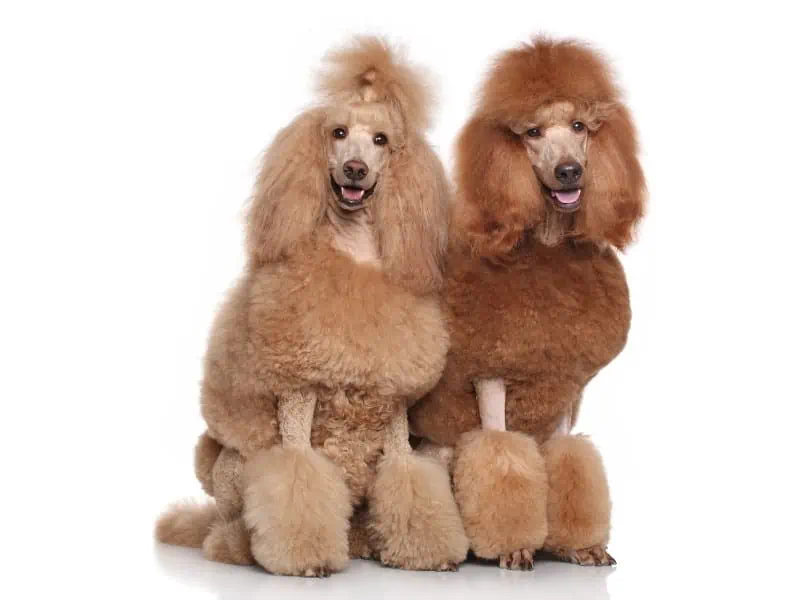
An Amazing Dog Regardless of Color
Regardless of whether a Poodle is red, apricot, or any other color, the coloring of your Poodle will not be a factor in its personality or temperament. Poodles are highly intelligent, easily trainable, and very social. Any color Poodle from a reputable breeder that receives appropriate training and care can be an incredible companion.
While the uncertainty about what your puppy’s coloring might look like when it is an adult, you can rest assured that no matter which color Poodle you choose, you will end up with a beautiful dog. If you have your heart set on a Red Poodle, a chance remains that your Poodle could maintain dark red coloring into adulthood.
Still, whether you choose a Red or Apricot Poodle, you can’t be sure where your pet’s coat will end up on the beautiful spectrum of Poodle colors.